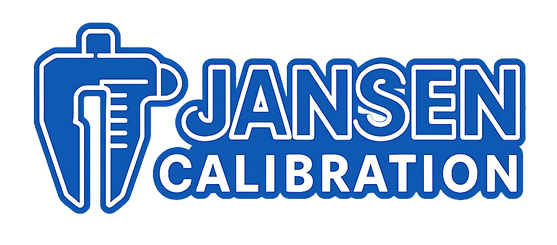No products in the cart.

Pressure transmitters play a vital role in various industrial processes by converting pressure measurements into electrical signals. Over time, even the most reliable transmitters can drift out of accuracy due to environmental stress, wear and tear, or aging components. This is why routine calibration is essential to ensure your system’s safety, efficiency, and regulatory compliance.
In this comprehensive guide, we’ll walk you through how to calibrate a pressure transmitter using a loop calibrator—an industry-standard method that combines simplicity and precision. Whether you’re a field technician, instrumentation engineer, or maintenance professional, this step-by-step guide will help you master the calibration process with confidence.
📌 What Is a Pressure Transmitter?
A pressure transmitter is an instrument that measures pressure in a fluid, gas, or steam and converts it into a standardized electrical output—typically 4-20 mA. It is commonly used in process industries like oil & gas, water treatment, pharmaceuticals, and manufacturing.
Explore our range of Pressure Measurement Instruments for robust, high-accuracy solutions suitable for demanding environments.
🧰 What Is a Loop Calibrator and Why Use It?
A loop calibrator is a portable device used to simulate and measure current loops (typically 4-20 mA), making it ideal for testing and calibrating transmitters, controllers, and other process instruments. The loop calibrator allows you to:
-
Source, simulate, and measure current
-
Provide loop power
-
Read output from transmitters
-
Perform live loop testing without disrupting control systems
For field technicians who need portable accuracy, check out our Process Instrument Calibrators or view the popular Fluke 710 Precision Loop Calibrator.
🛠 Tools & Equipment You’ll Need
To calibrate a pressure transmitter using a loop calibrator, prepare the following:
-
Pressure transmitter
-
Pressure source (e.g., hand pump or dead weight tester)
-
Loop calibrator
-
Multimeter (optional, for additional verification)
-
Tubing/fittings for pressure connections
-
Power source (if loop calibrator doesn’t provide loop power)
-
Calibration sheet or digital documentation tool
✅ Step-by-Step Guide to Calibrating a Pressure Transmitter Using a Loop Calibrator
Step 1: Safety First
-
Isolate the transmitter from the process.
-
Depressurize the line.
-
Tag-out the equipment to avoid accidental process startup.
Step 2: Connect the Loop Calibrator
-
If sourcing power: Connect the calibrator in series with the transmitter loop.
-
If measuring: Connect the calibrator in parallel to read the loop current.
-
Use proper terminals: mA source, measure, or simulate depending on your task.
Step 3: Apply Known Pressure Input
-
Use a pressure source (e.g., hand pump) to apply pressure to the transmitter.
-
Apply 0%, 25%, 50%, 75%, and 100% of the full-scale pressure.
Step 4: Record Output at Each Pressure Point
-
Use the loop calibrator to read the transmitter output.
-
Compare actual output (in mA) with the expected value for each pressure point.
-
Document any deviations.
Step 5: Adjust the Transmitter (If Needed)
-
If the deviation is outside the acceptable tolerance, use the transmitter’s zero and span adjustment screws or digital interface to bring it back into calibration.
Step 6: Verify and Recheck
-
After adjustment, reapply each pressure point and confirm that the output is now within specification.
Step 7: Final Documentation
-
Complete the calibration certificate or digital log.
-
Include pre-adjustment and post-adjustment data, equipment used, and the technician’s initials.
📈 Tips for Accurate Calibration
-
Always let the pressure stabilize before recording the reading.
-
Calibrate at the same ambient temperature as normal operating conditions.
-
Use high-accuracy loop calibrators for tighter tolerance requirements.
-
Schedule calibration at regular intervals—quarterly or biannually, depending on your application.
Need help choosing the right tools? Explore our collection of Calibration Instruments for reliable solutions trusted by professionals.
🔁 Automating the Calibration Process
In modern plants, automated calibration systems reduce downtime and human error. You may consider using advanced documenting process calibrators or connecting your instruments to a calibration management software for digital record-keeping and audit trails.
For example, tools like the Beamex EXT600 Advanced Field Calibrator offer full-loop calibration capability and data integration.
🧪 Applications Where Pressure Transmitter Calibration Is Critical
-
Oil & Gas: Monitoring wellhead pressure and ensuring pipeline integrity
-
Pharmaceuticals: Maintaining cleanroom conditions and batch consistency
-
Water Treatment: Controlling pressure in filtration and pumping systems
-
Power Generation: Managing boiler and steam system pressure
Explore more use cases and tools under our Process Instruments Category.
🧩 Related Articles
-
How to Source Certified Test and Measurement Equipment for International Projects
-
Understanding Loop Calibrators: A Comprehensive Guide for Process Technicians
-
Pressure Calibrators Explained: How to Ensure Process Accuracy in Industrial Settings
🏁 Conclusion
Calibrating a pressure transmitter using a loop calibrator is a straightforward yet essential process for ensuring measurement accuracy and operational safety. By following a standardized calibration procedure, documenting results, and using the right tools, you can maintain the integrity of your process systems with confidence.
Looking for reliable calibration tools? Browse our full line of Process Instruments Calibration Solutions and optimize your maintenance operations today.
